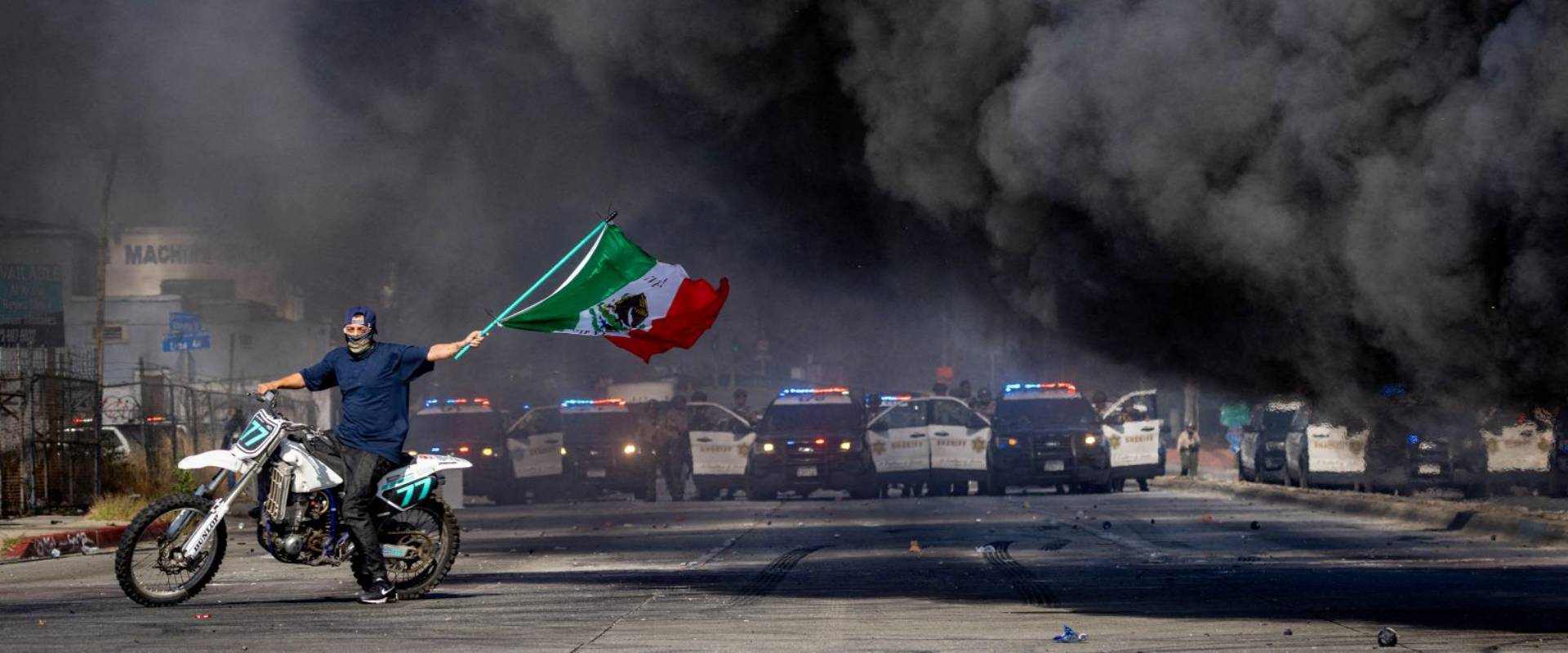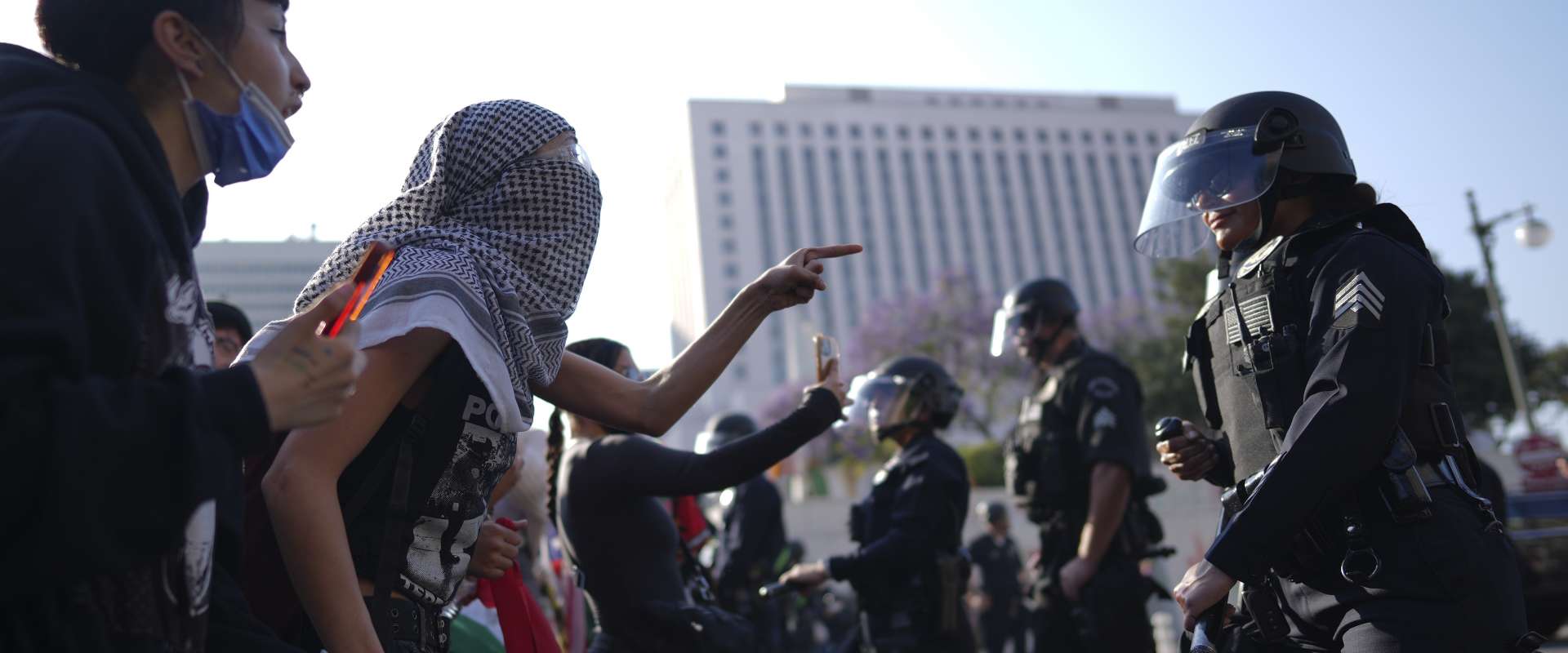Every year I teach an Introduction to Cultural Anthropology course. In the section in which we focus on socioeconomic class, I ask my students to read and interpret the famous first pages of the Communist Manifesto. These are the pages in which Marx and Engels broadly define the proletariat and bourgeoisie and introduce the key Marxist insight that the working class is that class the members of which are reduced to selling their labor power on the market. I then quiz my students on the meaning of these terms and ask them to provide examples. Interestingly, my students respond with variations on phrases such as “the proletariat is the middle working class,” “the proletariat are the middle class,” and the like.
According to Roediger, the term “middle class” and the rhetoric surrounding it are a misrecognition or failure to understand class and how to solve the “miseries” caused by it. He argues that the idea of a “middle class” is both ideological formation and a “formation worthy of consideration.”
Reading David Roediger’s The Sinking Middle Class: A Political History of Debt, Misery, and the Drift to the Right (2022, Haymarket Books), I came to better understand my students’ confusion (a confusion, admittedly, that I too shared before joining the Marxist movement). As shown by Roediger, an eminent left historian who has made pathbreaking contributions to our understanding of the intersections of race and class in the United States, the conflation of the proletariat with ‘middle class,’ and the consequent erasure of any specific sense of either term, has been an ideological project of the US ruling class over the past century. Roediger’s insightful book is an important contribution to our understanding of class in the United States. It can also provide valuable insights for revolutionary socialist movement activists and organizers.
The rhetoric of the “middle class”: A ruling class ideological project
In 2011 a Citigroup analysis pointed out that, in contrast to stereotypes about a “middle-class nation,” the United States was in reality composed of two distinct groups, the rich and the “rest.” The report was blunt and far more honest than the bourgeois media and politicians. Its conclusion was that “for the purposes of investment decisions, the second group didn’t matter … The richest 1 percent of households earned as much each year as the bottom 60 percent put together; they possessed as much wealth as the bottom 90 percent.” This is in marked contrast to politicians’ and the media’s article of faith that the United States is a “middle-class nation.” What explains the difference?
According to Roediger, the term “middle class” and the rhetoric surrounding it are a misrecognition or failure to understand class and how to solve the “miseries” caused by it. He argues that the idea of a “middle class” is both ideological formation and a “formation worthy of consideration” for three reasons.
First, consciousness is important. The questions of how you imagine yourself, your identity, and your class location, are necessary for socialists to take into account if we want to organize with our co-workers and build organizations that can lead our class away from reactionary politics, which, Roediger correctly points out, are what middle-class politics are. Second, borrowing a term from the analytical Marxist sociologist Erik Olin Wright, those who identify as middle-class often occupy contradictory class locations. While certain sectors of the labor force are “uncontroversially middle-class” — for example, entrepreneurs or many self-employed —- it’s more complex for others.. Examples include the plumber who spends part of her time working as an independent contractor and part of her time for a wage, the “well-remunerated but closely bossed” manager, etc. Third, identification with the middle class is manipulated by elites. Elites attempt to channel the contradictions (or the “miseries,” as Roediger puts it) of the middle class towards reactionary economic, racial, and gender policies. Likewise they channel the “miseries” away from solidarities across occupational categories as well as away from a scientific (class) analysis of the source of the aforementioned miseries in capitalist property relations..
A steady drift to the right
Roediger argues that over the last 30 years, the rhetoric of “saving the middle class” has emerged in particular around electoral campaigns. Its function, along with that of elections themselves, has been to narrow the masses’ political horizons. In Marxist language, we would say that the effect has been a demobilization of the militancy of certain sectors of our class — especially those racialized as white — and a diversion toward self-defeating paths, such as putting faith in the two capitalist parties, and racism. This, in turn, has provided cover for the steady rightward drift of US politics. One of the important reasons for this is that the “middle class,” Roediger shows, connotes “whiteness.” It is whiteness which speaks in race-neutral language.
All this ‘middle class’ talk has degraded popular understandings of class and how it functions in the United States, and opens the space for fanciful assertions that the United States is a middle-class nation.
All this “middle class” talk has degraded popular understandings of class and how it functions in the United States, and opens the space for fanciful assertions that the United States is a middle-class nation. In turn, and drawing on earlier Cold War invocations of the term, “middle class” has been deployed to fortify American exceptionalism. Finally, according to Roediger’s nuanced argument, over the past decade, especially since the election of Donald Trump as US president, the rhetoric of the “white working class” has done the same — if not worse — ideological work
Historical materialism’s continued importance
Roediger cuts through the morass of middle-class ideology by drawing on historical materialism. He begins with Marx, who understood the middle class to consist of small property holders and independent professionals, though in later writings he made nods to the “new middle class,” for example, paid functionaries of capital such as managers, clerks, sales staff, and accountants among others. Marx saw the latter as doing “unproductive” labor (more about this below). Drawing on more recent materialist accounts of the middle class, for example by C. Wright Mills, Erik Olin Wright, and Barbara Ehrenreich, Roediger highlights the distinction between the “old” self-employed middle classes and the “new” salaried ones. He argues that experiences of debt, anxiety, and segregation, among others, are effects of the contradictory class position of this salaried class, causing “peculiarly alienated” lives at work and “soul-killing” precarity. This class position, in other words, encompasses objective, immiserating conditions by which significant sectors of the middle class can be won to a socialist program. Doing this means that the language of “saving the middle class” must be ditched.
According to Roediger, almost no one used the term “middle class” in the United States in the mid-19th century. Throughout the 19th century, US print outlets used the term mainly to refer to middle classes abroad, particularly in Europe. Even by the 1920s, usage of “middle class” was far from common. It was only during the Great Depression that use of the term “skyrocketed,” rising again during the time of the Spanish Civil War and the Cold War. In 1940, Fortune magazine could now claim that “the US is a Middle-Class” nation, explicitly tying “middle class” to the idea of American exceptionalism. By the 1980s and 1990s, it was just taken as common sense that the United States was a “middle-class” nation and that because of this it has avoided the “pathologies” affecting foreign countries, from coups to revolutions.
“Productive” and “unproductive” labor
One of Roediger’s most important interventions is his critical engagement with Marx’s distinction between “productive” and “unproductive” labor. This is related to the aforementioned shibboleth of liberal and conservative US bourgeois politics, the idea of saving the middle class. For Roediger, the idea that we should save the middle class is useless in “clarifying when and how white-collar and professional workers act as working-class people.” It obfuscates the large shared terrain of objective conditions and subjective experiences between the wage-earning working class and the middle classes.
Roediger vindicates a Marxist materialist approach to understanding the middle class, but also shows that it has been uneven in its results. It was as early as the Communist Manifesto in 1848 that Marx and Engels drew a not always coherent distinction between the working and middle classes. This was understandable in its historical context, in which Marx and Engels sought, under the sign of communism, to reorient the working-class movement away from the middle-class, so-called socialist movement of the time.
Roediger vindicates a Marxist materialist approach to understanding the middle class, but also shows that it has been uneven in its results.
In doing so, however, the Manifesto rejected outright the revolutionary potential of the middle class. This is again understandable given their reactionary role in the 1848 revolutions, when shopkeepers marched against the barricades. As the Hungarian communist leader Béla Kun observed in the 1920s, it was the lower middle class, not the capitalist class, that crushed the working class during those revolutions. Marxists have tended to agree that the middle classes fight against the bourgeoisie only to save their existence as middle-class fractions.
The transformation of industrial capitalism in England, the United States, and, later, in the other imperialist countries confirmed Marx and Engels’s claim that all of capitalist society eventually splits into two great classes, the bourgeoisie and the proletariat. In the century after Marx and Engels wrote that, the labor force in the United States, for example, went from 80 percent self-employed to 80 percent employed for a wage or salary.
However, the question of the structural roles of the middle classes was one that Marx and Engels were not able to develop in their lifetimes. For them, the middle classes were structurally necessary for capitalist development as consumers of surplus produced by workers in factories but, from the perspective of the key dynamic of capitalism, the production of surplus value, were also “unproductive.” These middle-class elements, such as office and service workers, accountants, salespeople, and night watchmen were the new middle classes with whom Marx later attempted to grapple, nuancing the proletarian-bourgeois binary of the Manifesto. But Marx did not specify in the same way the productive-unproductive binary, thus complicating later Marxist political work.
In my personal experience, this undeveloped binary casts a long shadow. For example, I’ve heard numerous comrades in socialist and communist groups voicing variations on the “unproductive” middle class theme. Roediger’s contribution is to help us think more clearly about this:
The work of night watchmen and of caregivers, of secretarial labor, of janitors, and of all variety of other contracted-out services is now often itself the commodity produced in new regimes of accumulation. The idea of the “unproductive” clerk or secretary or call-center worker — increasingly the workers called middle-class — could hardly have equipped socialists to understand white-collar and service labor as like that of other workers. Nor did it create urgency to support their organizing.
In summary, we in the revolutionary socialist movement must distinguish between the reactionary uses of the language of the middle class with an attentiveness to the ways that those categorized and interpellated as middle-class share objective conditions of exploitation and hyperexploitation with those in the waged working class. Developing such an analysis as part of our organizing work will help us win the former away from reactionary politics and to solidarity with other workers across occupational boundaries.
Concluding thoughts
Roediger’s The Sinking Middle Class is a valuable addition to the radical literature on class and race in the United States, the latest in a career-spanning concern for the author. The book synthesizes a vast literature into an accessible, engaging volume and will be a must-readfor students of race, class and capitalism, as well as for activists in various anti-capitalist and anti-racist movement spaces. This review has only touched on some of the major themes in the text. The chapters on the self-marketing industry and its cultivation of what Foucault would call an “entrepreneurial neoliberal self” and the one on the rise of pollsters, such as Stanley Greeberg, who specialized in constructing a reactionary, implicitly white middle-class Democratic Party base, are nuanced and full of insight. Roediger’s theme of middle-class misery — the ways in which many middle-class individuals are individuated and hyperexploited through “cycles of overwork and consumption” — is innovative and, as mentioned, may be the most penetrating insight of the volume.
This being said, there are two areas about which Roediger could have said more. The first is his passing reference to the Democratic Socialists of America and Bernie Sanders. The DSA holds within it influential currents that have not only been uncritical about “saving the middle class” but have actively promoted a sort of “normie” socialism that dismisses, or at best regards as secondary, attempts to see colonial, racial, gender, and ability oppression as central drivers of capitalist exploitation. The same critique can be accurately leveled at Sanders, who has been particularly egregious on questions of US imperialism, a reactionary streak that is of a piece with his understanding of socialism as, basically, a welfare-state funded “elevation” of the working class into the middle class.
The second relates to reproductive justice and questions of socialist feminism and queer Marxism. The Sinking Middle Class is quite good and useful on the connections between race and class and specifically on how “middle class” is coded as “white” in the United States. By contrast, it says almost nothing about gender. One need only to call to mind that core element of middle-class identification, private home ownership, along with its related rhetorics of “property,” to see the gender dynamic of the US middle class: not just white, but heteropatriarchal, imagined with a cis-gender heterosexual male “breadwinner” and cis-gender heterosexual female “homemaker.” In turn, how can we understand the excrescence of the current political right, in all its tragic and violent heterosexuality, without seeing that the idea of “saving the middle class” is built upon the idea of anti-queer violence? Speaking of “normie socialists,” not only are they reactionary on questions of race, they predictably hold the same views on gender, some even unironically calling themselves “pro-life socialists.” Authentic socialism, revolutionary socialism, has no room for any pandering appeals to the “middle class,” whether made by our enemies or our “friends.” The Sinking Middle Class will help us draw the line clearly and for that it is of enduring value.



